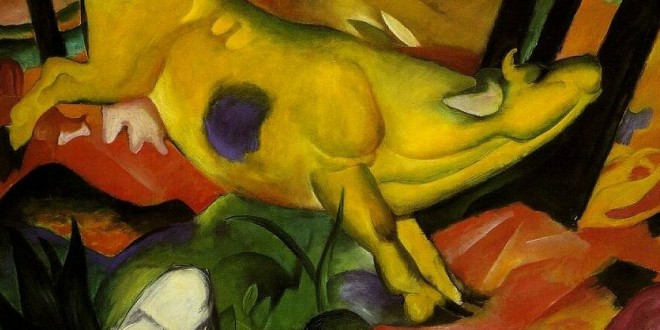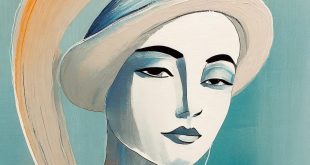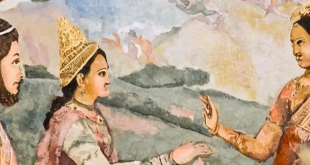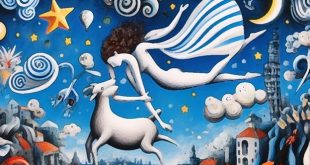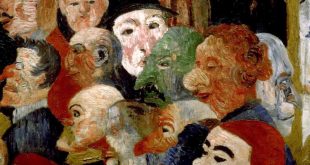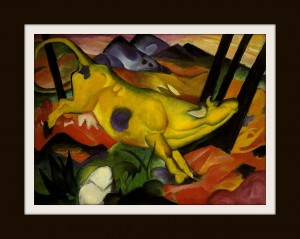 FRANZ MARC 1/4 – Not only was his work highly appreciated during his time, and extremely short career, but to this day, he is considered to be one of the most influential painters to come out of Germany, for the unique style. His father was a professional landscape painter, and in 1900 Marc began to study at the Academy of Fine Arts, at Munich.
FRANZ MARC 1/4 – Not only was his work highly appreciated during his time, and extremely short career, but to this day, he is considered to be one of the most influential painters to come out of Germany, for the unique style. His father was a professional landscape painter, and in 1900 Marc began to study at the Academy of Fine Arts, at Munich. 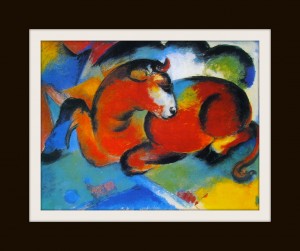 FRANZ MARC 2/4 – He spent four years in France, visiting the city’s museums and copying many paintings, discovering a strong affinity for the work of painter Vincent van Gogh. He traveled to Thessaloniki – Mount Athos – and various other Greek locations. In 1912, Marc met Robert Delaunay, whose use of color and futurist method.
FRANZ MARC 2/4 – He spent four years in France, visiting the city’s museums and copying many paintings, discovering a strong affinity for the work of painter Vincent van Gogh. He traveled to Thessaloniki – Mount Athos – and various other Greek locations. In 1912, Marc met Robert Delaunay, whose use of color and futurist method. 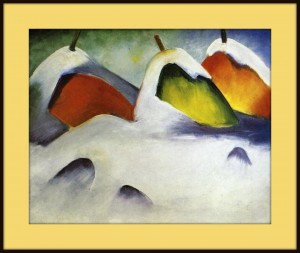 FRANZ MARC 3/4 – Most of his mature work portrays animals, usually in natural settings. His works were oppressed by the Nazis in the early 1930s, and nearly 130 pieces which he had created, were removed from exhibits, and art shows that he had become a part of, in different cities in Germany. His work is characterized by bright primary color, an almost cubist portrayal of animals, stark simplicity and a profound sense of emotion.
FRANZ MARC 3/4 – Most of his mature work portrays animals, usually in natural settings. His works were oppressed by the Nazis in the early 1930s, and nearly 130 pieces which he had created, were removed from exhibits, and art shows that he had become a part of, in different cities in Germany. His work is characterized by bright primary color, an almost cubist portrayal of animals, stark simplicity and a profound sense of emotion. 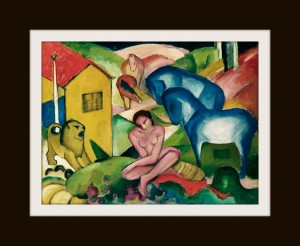 FRANZ MARC 4/4 – The use of bold, bright colors were often seen in his works as well. He also gave meaning to the colors that were used in his pieces: blue was used to depict masculinity and a spiritual style; while yellow and lighter colors depicted femininity and joy. Red tones were often used to depict violence or some serious under toning in his work. In 1916, he was exempted from military service for artistic merit. But the last day of service he died, because struck by two splinters, in Verdun. He was buried in Gussainville until 1917, when his wife Maria he moved the remains in Kochel am See.
FRANZ MARC 4/4 – The use of bold, bright colors were often seen in his works as well. He also gave meaning to the colors that were used in his pieces: blue was used to depict masculinity and a spiritual style; while yellow and lighter colors depicted femininity and joy. Red tones were often used to depict violence or some serious under toning in his work. In 1916, he was exempted from military service for artistic merit. But the last day of service he died, because struck by two splinters, in Verdun. He was buried in Gussainville until 1917, when his wife Maria he moved the remains in Kochel am See.
You can see more on Meeting Benches, looking for: FRANZ MARC (1880/1916), GERMAN PAINTER – Extremely short career, discovering a strong affinity for the work of van Gogh
 Meeting Benches World art in all forms
Meeting Benches World art in all forms
